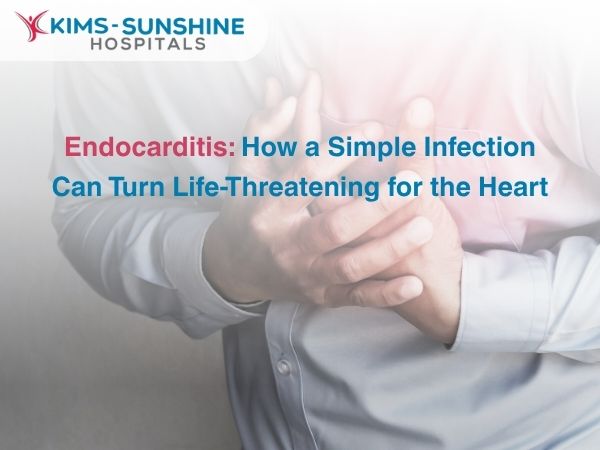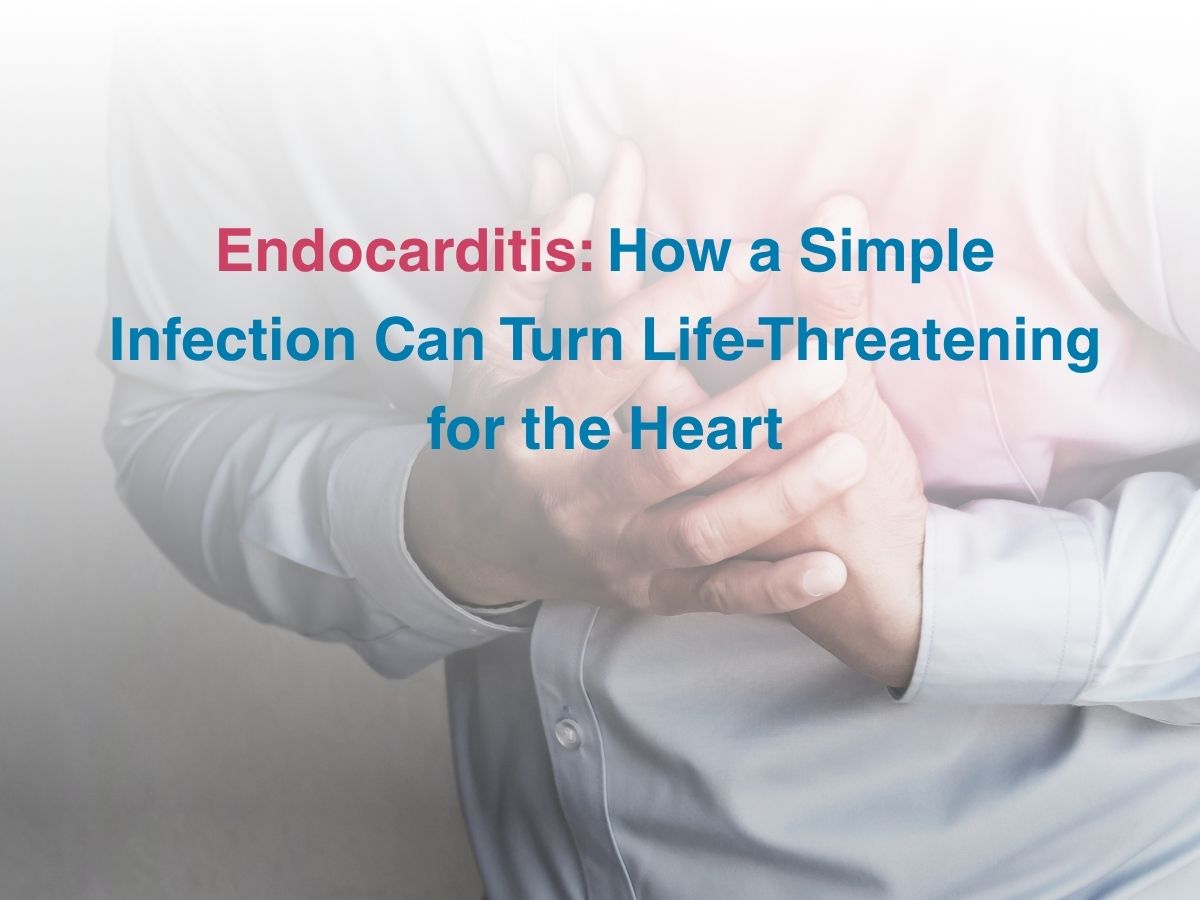
Endocarditis: How a Simple Infection Can Turn Life-Threatening for the Heart
 The heart is composed of three distinct layers of cells- called the inner endocardium, middle myocardium and outer epicardium respectively. There is an additional layer of tissue for greater protection – which is the thick pericardium. You should also know that medical professionals tend to use the “-itis” suffix whenever there is inflammation of a particular tissue in the body- so endocarditis means, you guessed it right- inflammation of the inner endocardial layer of the heart. It is a very rare condition that affects few people in the Indian subcontinent, but clinically relevant, as timely diagnosis and effective treatment are necessary for the person to get better.
The heart is composed of three distinct layers of cells- called the inner endocardium, middle myocardium and outer epicardium respectively. There is an additional layer of tissue for greater protection – which is the thick pericardium. You should also know that medical professionals tend to use the “-itis” suffix whenever there is inflammation of a particular tissue in the body- so endocarditis means, you guessed it right- inflammation of the inner endocardial layer of the heart. It is a very rare condition that affects few people in the Indian subcontinent, but clinically relevant, as timely diagnosis and effective treatment are necessary for the person to get better.
What Is Endocarditis?
Endocarditis is suspected when there is inflammation of the endocardium layer of the heart, as structures called vegetations develop due to some systemic infection that is caused by bacteria, fungi or other pathogens. As the endocardium is damaged, germs gain easy access to the heart valves and infect them. Endocarditis can develop slowly or swiftly, depending on how the person’s heart was, before infection and if they suffer from any other chronic heart related conditions. The growths or vegetations are what can hamper heart function in the long run. Endocarditis is mainly of two types- infective (caused by pathogens) and non-infective which is much rarer and is mostly caused due to autoimmune conditions and not any pathogenic agent per se.
Causes Of Heart Infection-
Some well known causes of endocarditis include- infections in other parts of the body- like the mouth or skin or lungs. The pathogen in question can get into the bloodstream and travel to the heart and get lodged there, if there is already some previous inflammation and scarring. This can encourage the growth of vegetation – which can destroy surrounding cardiac tissue. If you have had any surgery, or an external assist device of some kind has been inserted into your heart, then your risk of developing endocarditis is much higher than usual. You are also vulnerable if you have a weak immune system or suffer from chronic conditions like gum disease, diabetes, etc.
Symptoms Of Endocarditis-
Symptoms of an infected endocardium can include the following-
- Having chest pain and a faster than usual heart rate
- Heart murmur may also be detected.
- You may have a high fever.
- You may feel very tired and not have much of an appetite.
- You may have muscle or joint pain.
- You may feel breathless.
- You may notice blood in urine.
- You could also have fluid retention or oedema in the abdomen or extremities.
If the endocarditis you have is non infective, then it may have been discovered due to accident, as it may not always be symptomatic or very obvious.
Endocarditis Diagnosis (Blood Tests, Echocardiogram)-
Timely diagnosis of endocarditis is important, as delaying treatment can lead to complications like stroke, sepsis, leaky heart valve, heart failure, or arrhythmias. Diagnosis usually involves the use of specialised imaging and other tests which have been explained in greater detail below-
- Blood tests- to check for bacteria or other pathogens.
- Complete blood count is done to check for the presence of any parasites or anomalies.
- A high CRP value means you have an infection, and it is a general test.
Imaging can help in such cases and your doctor will ask you to get an ECG, a trans-oescophageal ECG or even a cardiac MRI at times. An ECG is done to check if there is any structural or functional issue with the heart, with specialised ECGs being requested for greater understanding by the physician.
Treatment Options For Endocarditis-
You will be prescribed antibiotics for about 6-8 weeks or so, for the complete infection to get treated. They may start with broad spectrum antibiotics initially and once your culture results have come in- adjust them for more specificity. They will also repeat cultures afterwards, to check if you are okay after a course of treatment. However, if endocarditis was more pervasive and there is valve damage, then you may require repair or valve replacement surgery.
Conclusion
Endocarditis can be hard to deal with if not diagnosed in time and aggressive treatment with antibiotics can help in the long run. It is a preventable condition mostly though- so make sure you go to your dentist regularly and check for gum and oral disease. If your endocarditis has been found to be related to an autoimmune condition, then treatment approaches will be different, so talk to your doctor to better understand what can be done. In such cases, preventing blood clots will be a priority and medication will be used to deal with that in particular.






